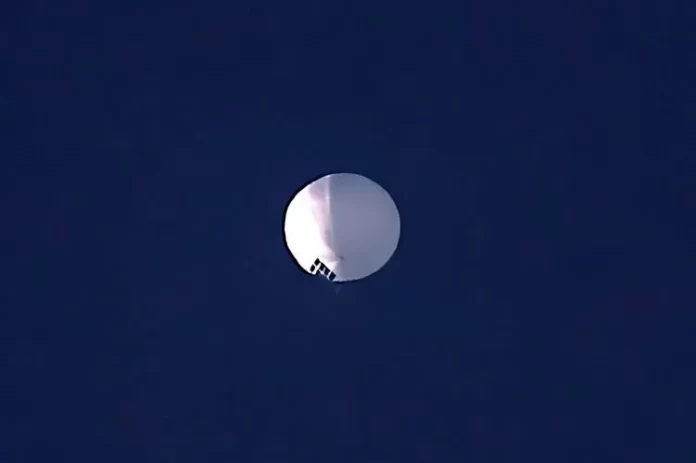A Chinese surveillance balloon sighted above Montana in the northern United States earlier this week has sparked diplomatic tensions between the world’s two biggest economies. As a result of the balloon’s presence, Secretary of State Antony Blinken cancelled a trip to China. The Pentagon reported that the balloon floating over Montana on a high-altitude wind. Because of the danger to people, President Joe Biden decided against shooting down the balloon. The balloon, however, was shot down off the east coast of the United States on Saturday.
The Chinese government said the balloon was a “civilian airship used for study” that had been blown off course. At the same time, the Pentagon claimed it was a spy balloon that had been shot with to prevent it from capturing critical information. The Pentagon also stated that the balloon did not provide China with capabilities beyond its spy satellites. Still, military and intelligence analysts said that the slow speed and high altitude of balloons, which typically operate at around 80,000ft, allows them to record over a larger area and pick up more detail than satellites in orbit.
Surveillance balloons were originally employed for military surveillance during the French Revolutionary Wars and have since been utilised extensively throughout history. They have been technologically outdated in recent decades owing to huge improvements in satellite technology, the proliferation of spy satellites, and the increasing usage of unmanned drones. However, they are still in use, notably for non-military monitoring. They are more difficult to detect than metal drones or aeroplanes and may stay in the air for weeks, offering a detailed evaluation of activities on the ground.
In the past, the United States and China have accused each other of espionage. Beijing has long alleged that American ships and aircraft close to its borders are conducting monitoring. At the same time, the US argues that its surveillance activities occur in international seas and airspace. Some observers believe that the balloon was either mistakenly aimed towards the US or that its appearance was meant to alert Washington to be cautious.
The postponement of Blinken’s two-day trip to China has a significant impact, and ties between the two heavyweights are already strained. Blinken’s travel was part of attempts to defuse tensions after meetings between Biden and Chinese President Xi Jinping in November. At that meeting, the presidents resolved to try to put a floor under the relationship, which had slid to its lowest point since the nations established diplomatic ties in 1979.
The sight of the Chinese surveillance balloon above Montana has sparked diplomatic tensions between the United States and China. In retaliation, the US government fired down the balloon and cancelled a trip to China. The balloon is a reminder of the two nations’ tensions and their long history of accusing one other of espionage. It remains to be seen how the issue develops, but it is likely to influence US-China ties substantially.

